

Articles
How To Store A Bicycle
Modified: January 21, 2024
Learn how to store your bicycle properly with our informative articles. Keep your bike in top condition and ready for your next ride.
(Many of the links in this article redirect to a specific reviewed product. Your purchase of these products through affiliate links helps to generate commission for Storables.com, at no extra cost. Learn more)
Introduction
Storing a bicycle properly is essential to ensure its longevity and maintain its performance. Whether you’re storing your bike for the winter season or simply need a safe space to keep it when not in use, taking the time to store it correctly will prevent damage and increase its lifespan. In this article, we will provide you with comprehensive guidelines on how to store a bicycle properly, keeping it safe and well-maintained.
When it comes to storing your bicycle, there are a few important factors to consider. First, you need to choose the right storage location. This includes finding a space that is dry, cool, and protected from extreme temperatures and humidity. Ideally, you want a place where your bike will be shielded from the elements and potential damage.
Once you have identified the appropriate storage location, the next step is to prepare your bike for storage. This involves a thorough cleaning of the bicycle to remove any dirt, grime, or debris that may have accumulated. It’s essential to clean both the frame and components to prevent corrosion and maintain their functionality.
Rust is one of the biggest enemies of a bicycle, so it’s crucial to take measures to remove any existing rust and prevent further rusting. This can be done by thoroughly drying the bicycle after cleaning, applying a rust protection product, and regularly inspecting the bike for any signs of rust.
Deflating the tires is an important step in bicycle storage to prevent damage to the inner tubes and maintain the shape of the tires. By slightly deflating the tires, you reduce the pressure on them, ensuring they don’t develop flat spots or lose shape over time. It’s important to remember to reinflate the tires before riding the bicycle again.
Loosening the brakes is another essential step when preparing your bike for storage. By loosening the tension on the brake cables, you prevent them from being under pressure for an extended period, which can lead to cable stretch and potential damage. However, be sure to adjust the brakes before you ride the bike again.
Lubricating your bicycle is crucial to prevent corrosion and keep the moving parts functioning smoothly. Before storing your bike, apply lubricant to the chain, gears, derailleurs, and other moving parts. Avoid over-lubricating as this can attract dirt and cause more harm than good.
With the preparation complete, it’s time to choose the appropriate storage method for your bicycle. There are various options available, depending on the space you have and your personal preferences.
Key Takeaways:
- Properly storing your bicycle is crucial for maintaining its longevity, protecting it from damage, and ensuring it is ready to ride whenever you need it. Choose the right storage location, clean and prepare your bike, and consider using a bicycle storage bag for added protection.
- When storing your bicycle, consider factors such as space availability, ease of access, security, and the overall aesthetic of your storage area. Choose a method that suits your specific needs and ensures that your bike remains secure, protected, and easily accessible when you need to use it.
Read more: How To Store Bicycles
Choosing the Right Storage Location
When it comes to storing your bicycle, the first step is to find the right storage location. This is crucial to protect your bike from damage and ensure its longevity. Here are a few factors to consider when selecting the ideal storage spot:
1. Indoor vs. Outdoor Storage: Whenever possible, choose an indoor storage space for your bicycle. Keeping it indoors protects it from the elements, such as rain, snow, and extreme temperatures. If indoor storage is not available, consider using a weatherproof cover to shield the bike from rain and other outdoor elements.
2. Dry and Cool Environment: Moisture is one of the biggest enemies of a bicycle. Look for a storage location that is dry and cool to prevent rust and corrosion. Avoid areas that are prone to high humidity, such as basements or poorly ventilated garages.
3. Protection from Sunlight: Prolonged exposure to direct sunlight can fade the paint and damage the components of your bicycle. Choose a storage spot that offers protection from harsh UV rays to keep your bike looking vibrant and prevent any potential damage.
4. Security and Accessibility: Ensure that your storage location provides adequate security to protect your bicycle from theft. If you’re storing your bike in a communal area, consider using a sturdy lock or investing in a storage facility with advanced security features. Additionally, it’s important to choose a storage spot that allows for easy accessibility whenever you need to use your bike.
5. Space and Convenience: Consider the amount of available space in your chosen storage location. Ensure that there is enough room to maneuver your bike in and out without any obstacles. If you have multiple bikes, make sure there is sufficient space to store all of them securely.
6. Ventilation: Good ventilation is essential to prevent the buildup of moisture and minimize the risk of mold or mildew. Choose a storage spot that allows for proper airflow to keep your bike in optimal condition.
By carefully considering these factors, you can choose the right storage location that will protect your bicycle and ensure it is ready for use whenever you need it.
Cleaning and Preparing the Bicycle for Storage
Before you store your bicycle, it’s essential to give it a thorough cleaning and prepare it for storage. This not only helps maintain the bike’s appearance but also prevents dirt and grime from causing damage or corrosion over time. Follow these steps to clean and prepare your bicycle for storage:
- Gather your cleaning supplies: Before you begin cleaning, gather the necessary tools and supplies. You’ll need a bucket of warm soapy water, a sponge or soft brush, a bike-specific degreaser, a chain cleaner tool (optional), and clean, dry towels.
- Remove any accessories: Take off any accessories or removable parts from your bike, such as lights, fenders, or saddlebags. This will make it easier to clean and store your bicycle.
- Start with a general cleaning: Dip your sponge or brush into the warm, soapy water and gently scrub the frame, handlebars, fork, and wheels. Pay special attention to remove any dirt, mud, or debris that may have accumulated. Rinse with clean water and dry thoroughly with a towel.
- Clean the drivetrain: The drivetrain, including the chain, cassette, and derailleur, tends to accumulate grease and grime. Use a bike-specific degreaser and apply it to the chain and other drivetrain components. You can use a chain cleaner tool or a brush to remove the dirt effectively. Rinse with water and dry thoroughly.
- Inspect and lubricate the moving parts: Carefully inspect the pedals, crankset, derailleurs, and brakes. Look for any signs of wear or damage. Apply a small amount of lubricant to these moving parts to prevent corrosion during storage. Be sure to wipe off any excess lubricant to avoid attracting dirt and dust.
- Clean and check the brakes: Use a clean cloth or towel to wipe the brake surfaces and remove any dirt or residue. Inspect the brake pads for wear and replace them if necessary. Squeeze the brake levers to ensure they are working properly and do not stick.
- Check the tires and inflate or deflate as needed: Inflate the tires to the recommended pressure specified on the sidewall. If storing your bike for an extended period, consider slightly deflating the tires to reduce pressure and avoid flat spots. Remember to reinflate them before riding again.
- Wipe down the bike and dry thoroughly: Use a clean, dry towel to wipe down your entire bicycle, removing any excess water or moisture. Ensure that the bike is completely dry before storing to prevent rust or mold growth.
Following these steps will ensure that your bike is clean, well-maintained, and ready for storage. A clean and properly prepared bicycle will retain its condition and be ready for use when you’re ready to ride again.
Removing and Preventing Rust
Rust is one of the most common enemies of bicycles, as it can cause damage and affect the overall performance of your bike. If you discover any signs of rust on your bicycle, it’s important to address it promptly to prevent further corrosion. Here are some steps you can take to remove and prevent rust:
- Assess the extent of the rust: Before taking any action, evaluate the severity of the rust on your bike. Minor surface rust can often be treated effectively, while extensive rust may require professional assistance or replacement of the affected parts.
- Start with a rust removal solution: There are various rust removal solutions available on the market that can help dissolve rust and make it easier to remove. Follow the instructions provided with the solution and apply it to the rusted areas of your bike. Use a soft brush, sponge, or cloth to scrub the rust gently.
- Use vinegar or lemon juice: If you prefer a more natural approach, you can create a homemade rust removal solution using vinegar or lemon juice. Simply soak a cloth in either vinegar or lemon juice and apply it to the rusted areas. Let it sit for a few minutes to allow the acid to loosen the rust, then scrub it gently to remove the rust.
- Try aluminum foil and cola: Another homemade rust removal method is to use aluminum foil and cola. Tear off a small piece of aluminum foil, dip it in cola, and gently rub it over the rusted areas. The combination of the acid in the cola and the abrasive nature of the foil can help remove the rust effectively.
- Rinse and dry thoroughly: Once you have removed the rust, rinse the affected areas with clean water to remove any residue from the rust removal solution. Ensure that you dry your bike thoroughly to prevent any moisture from contributing to rust formation.
- Apply a protective coating: To prevent future rusting, consider applying a protective coating to the exposed metal surfaces of your bicycle. This can be in the form of a spray-on rust inhibitor, a thin layer of bike-specific wax, or a protective clear coat. These coatings act as a barrier, preventing moisture and oxidation from reaching the metal and causing rust.
- Regular maintenance and cleaning: Prevention is key when it comes to rust. By regularly cleaning and maintaining your bike, you can prevent rust from forming in the first place. Regularly inspect your bike for any signs of rust or corrosion and address them promptly. Keep your bike clean, dry, and well-lubricated to minimize the risk of rust formation.
By following these steps, you can effectively remove rust from your bicycle and implement preventive measures to avoid future rusting. By taking care of your bike and addressing rust issues as soon as they arise, you can ensure that your bicycle remains in excellent condition and performs at its best for years to come.
Deflating the Tires
When it comes to storing your bicycle, deflating the tires is an important step that can help protect your bike and extend the lifespan of its tires. By reducing the pressure inside the tires, you can prevent damage and maintain their shape during long periods of storage. Here’s a step-by-step guide on deflating your bike’s tires properly:
- Check the recommended tire pressure: Before deflating your tires, it’s crucial to know the recommended tire pressure for your bike. This information is usually printed on the sidewall of your tires and can vary based on the type of bicycle and tire you have. It’s important to have an understanding of the appropriate pressure to ensure you don’t overinflate or underinflate your tires.
- Prepare the tools: To deflate your tires, you’ll need a tire pump or an air pressure gauge with a deflate feature. Make sure you have the necessary tools readily available before you begin.
- Locate the valve: Tire valves are typically found on the inner rim of the wheel. The most common types of valves are Presta and Schrader valves. Familiarize yourself with the type of valve on your bike, as this will determine the method of deflation.
- For Presta valves: If your bike has Presta valves, start by removing the valve cap. Unscrew the small locknut on the valve stem to release the airflow. Press down on the valve to fully deflate the tire. Be cautious not to press too hard or you may damage the valve.
- For Schrader valves: With Schrader valves, there is no need to unscrew a locknut. Simply press down on the center pin with a small tool, such as a screwdriver, to release the air. The pin should remain pressed down until the tire is fully deflated.
- Check the tire pressure: After deflating the tires, you may want to use an air pressure gauge to verify that the pressure has decreased to the desired level. This step is optional but can provide peace of mind knowing that the tires are properly deflated.
- Store your bike properly: Once the tires are deflated, it’s important to store your bike in a suitable location. Keep it in a dry, cool area away from direct sunlight and extreme temperatures. Make sure the bike is securely positioned to prevent any accidental damage.
- Reinflate the tires before riding: When you’re ready to ride your bike again, don’t forget to reinflate the tires to the proper pressure. Refer to the recommended tire pressure specified on the sidewall of your tires and use a pump or gauge to reinflate them accordingly. Riding with underinflated tires can lead to reduced performance, increased rolling resistance, and potential damage.
By properly deflating your bike’s tires for storage, you can help maintain their shape, prevent flat spots, and ensure they are ready for use when you’re ready to ride again. Remember to follow the manufacturer’s recommendations and take appropriate precautions to preserve the integrity of your tires during storage.
Read more: How To Store A Bicycle Outside
Loosening the Brakes
When preparing your bicycle for storage, it’s important to loosen the brakes to prevent them from being under constant tension, which can lead to cable stretch and potential damage. By taking the time to properly loosen the brakes, you can ensure that they remain in good condition during periods of storage. Here’s a step-by-step guide on how to loosen the brakes of your bike:
- Identify the brake type: Before loosening the brakes, it’s essential to identify the type of brakes installed on your bike. The most common types are rim brakes and disc brakes. Understanding the specific brake mechanism will help determine the appropriate method for loosening the brakes.
- For rim brakes: If your bike has rim brakes, start by examining the brake caliper on each wheel. Locate the quick-release mechanism, which is typically a lever or button near the brake arms. Activate the quick-release by pulling the lever or pressing the button, and then open the brake caliper wide enough to create space between the pads and the rim. This will help relieve tension on the brake cable.
- For disc brakes: If your bike is equipped with disc brakes, the process of loosening the brakes is slightly different. Look for the disc brake caliper on each wheel. Locate the adjustment barrel or pad adjustment knob on the brake lever. Rotate the barrel or knob to move the brake pads farther away from the disc rotor. This will create clearance and loosen the brakes.
- Check the brake operation: After loosening the brakes, verify that they are properly released by squeezing the brake levers. The brake pads should not touch the rim or disc rotor and should have some space between them. If the pads still touch the rim or rotor, further adjustments may be required.
- Ensure proper reinstallation: When you’re ready to ride your bike again, it’s crucial to readjust and tighten the brakes to ensure they function correctly. Follow the manufacturer’s instructions or consult a professional bike mechanic if you’re uncertain about how to properly reposition and tighten the brakes. Ride your bike for a short distance to test the brake performance before resuming regular riding.
By loosening the brakes during storage, you prevent cable tension, which can cause stretching and compromise the functionality of your brakes over time. Take the necessary precautions to properly loosen and adjust your bike’s brakes, ensuring they are ready for use when you’re back on the road or trail.
Lubricating the Bicycle
Lubricating your bicycle is an essential step in maintaining its performance and longevity. Proper lubrication helps to reduce friction, prevent corrosion, and keep the components running smoothly. By taking the time to lubricate your bike before storage, you ensure that it remains in optimum condition. Here’s a step-by-step guide on how to lubricate your bicycle effectively:
- Gather all the necessary supplies: Before you begin, gather the appropriate lubricants for your bike. Depending on the type of bicycle and its components, you may need chain lubricant, a general-purpose oil, or specific lubricants for specific parts like the derailleur or suspension fork. Consult your bike’s manufacturer or a knowledgeable bike shop if you’re unsure about which lubricants to use.
- Clean your bike: It’s crucial to start the lubrication process with a clean bike. Use a mild detergent or bike-specific cleaner to remove any dirt, grime, or old lubricant from the components. Rinse thoroughly and dry the bike completely to prepare it for lubrication.
- Apply lubricant to the chain: The chain is one of the most critical components to lubricate. Apply a small amount of chain lubricant along the entire length of the chain. Use a clean, lint-free cloth or a chain lubricant applicator to distribute the lubricant evenly. Rotate the pedals backward several times to help the lubricant penetrate the chain links. Wipe off any excess lubricant with a clean cloth.
- Lubricate moving parts: Apply a thin layer of lubricant to other moving parts, such as the derailleur pivots, cables, and brake levers. Use a small brush or a cloth to ensure that the lubricant is evenly coated. Avoid over-lubricating, as excessive lubricant can attract dirt and cause more harm than good. Wipe off any excess lubricant after application.
- Inspect suspension forks and pivots: If you have a bike with suspension forks or pivots, check the manufacturer’s recommendations for lubrication. Apply the appropriate lubricant to these areas according to the instructions provided. Proper lubrication will help maintain the smooth functioning of the suspension and prolong its lifespan.
- Perform a final check: After lubricating your bike, take a few moments to check all the components, ensuring that they move freely and smoothly. Check the shifting and braking systems to ensure they operate properly. If you notice any issues or feel that additional maintenance is needed, it may be best to consult a professional bike mechanic for further inspection and adjustments.
- Store your bike properly: After lubricating your bike, store it in a suitable location to keep it protected during the storage period. Choose a dry and cool spot away from direct sunlight and extreme temperature fluctuations. Proper storage will help maintain the effectiveness of the lubrication and prevent any potential damage to the bike.
By following these steps and lubricating your bicycle before storage, you ensure that it remains in excellent condition and ready for use when you’re ready to ride again. Regular maintenance and lubrication are crucial for extending the life of your bike and enhancing your overall cycling experience.
Choosing the Appropriate Storage Method
When it comes to storing your bicycle, choosing the appropriate storage method is crucial to ensure its safety and longevity. There are several options available, each with its own advantages and considerations. Here are some common bicycle storage methods to help you make an informed decision:
1. Vertical Wall Mount
Vertical wall mounts are a popular choice for bike storage, especially in limited spaces. These mounts allow you to hang your bike vertically on a wall, utilizing the vertical space in your home or garage. Vertical wall mounts are typically easy to install and provide a secure and space-saving solution for storing your bike.
Read more: How To Store Bicycle In Apartment
2. Ceiling Mount
If you have a high ceiling or limited floor space, a ceiling mount can be a great option. Ceiling mounts typically hang your bike from the ceiling using hooks or pulleys, keeping it out of the way and maximizing your storage space. However, ceiling mounts may require some additional installation and may not be suitable for very heavy or large bikes.
3. Freestanding Bike Rack
A freestanding bike rack is a versatile option that allows you to store multiple bikes in a compact and organized manner. These racks come in various designs, such as a gravity stand or floor stand, and can be placed anywhere in your home or garage without the need for installation. Freestanding bike racks are a popular choice for households with multiple bikes or limited wall space.
4. Storage Hooks and Hangers
Simple and cost-effective, storage hooks and hangers are an easy way to store your bike. These hooks can be attached to the wall or ceiling, allowing you to hang your bike by its frame or wheel. Storage hooks and hangers are suitable for bikes of various sizes and can be used individually or in combination to accommodate multiple bicycles.
5. Using a Bicycle Storage Bag
If you need to store your bike for an extended period or transport it regularly, a bicycle storage bag can provide added protection. These bags are designed to enclose the entire bike, shielding it from dust, scratches, and other elements. Bicycle storage bags are especially useful if you need to store your bike in an outdoor area or transport it in a car or plane.
When selecting a storage method, consider factors such as space availability, ease of access, security, and the overall aesthetic of your storage area. It’s essential to choose a method that suits your specific needs and ensures that your bike remains secure, protected, and easily accessible when you need to use it.
By carefully selecting the appropriate storage method, you can maintain the condition of your bicycle, prevent damage, and prolong its lifespan. Proper storage not only keeps your bike safe but also makes it more enjoyable to ride when you’re ready to hit the road or trail.
Read more: How To Store Bicycles In Garage
Vertical Wall Mount
A vertical wall mount is a popular and practical solution for storing your bicycle, especially when space is limited. This storage method efficiently utilizes vertical wall space, keeping your bike off the floor and creating more room in your home or garage. Here are some key advantages and considerations when using a vertical wall mount:
Advantages:
- Space-saving: Vertical wall mounts allow you to take advantage of unused wall space, making them ideal for small living spaces or crowded garages. By hanging your bike vertically, you free up valuable floor area for other purposes.
- Convenience: With a vertical wall mount, your bike is easily accessible whenever you need it. This is particularly convenient if you frequently use your bike or need quick access for daily rides. You don’t have to navigate around bikes on the floor or struggle to remove bikes stored in tight corners.
- Secure storage: Vertical wall mounts provide a secure and stable storage solution. The bike is held firmly in place on the wall, reducing the risk of accidental damage or falls. Additionally, wall-mounted hooks or brackets can often be locked, adding an extra layer of security.
- Visual appeal: A bike mounted vertically on a wall can be an attractive and eye-catching display. It adds a unique element to your home or garage decor, showcasing your bike as a functional and stylish piece of equipment.
- Bike maintenance: When your bike is stored vertically, it allows for easier access to perform routine maintenance tasks. You can easily clean, inspect, and make adjustments without having to bend down or kneel on the floor.
Considerations:
- Wall strength: Before installing a vertical wall mount, ensure that the wall is strong enough to support the weight of your bike. Concrete or brick walls tend to be more robust than drywall or plasterboard, so it’s important to use appropriate anchors or consult a professional if you have any concerns.
- Bike weight and size: Vertical wall mounts can accommodate various bike sizes and weights, but it’s important to ensure the mount is suitable for your specific bike. Consider the frame size, wheel size, and overall weight of your bike to choose a mount that provides proper support.
- Clearance and maneuverability: When selecting a wall mount, consider the clearance required to hang your bike comfortably. Ensure there is enough space to easily mount and dismount the bike without obstructing doors, furniture, or other objects.
- Handlebar clearance: Depending on the design of your bike and the available wall space, handlebars may need to be turned or adjusted to prevent them from hitting the wall. This is an important consideration to ensure your bike fits properly on the mount and does not cause any damage.
- Installation: Proper installation is crucial for a secure and stable wall mount. Follow the manufacturer’s instructions carefully and use the recommended hardware. If you’re unsure or not comfortable with DIY installation, it may be best to seek assistance from a professional or a knowledgeable individual.
A vertical wall mount is a practical and efficient option for storing your bicycle, particularly when space is limited. It allows you to showcase your bike while creating more floor space. By considering the advantages and considerations mentioned above, you can choose the right vertical wall mount and enjoy a secure and convenient storage solution for your bike.
Ceiling Mount
A ceiling mount is an excellent storage solution for your bicycle, especially if you have limited floor space or want to keep your bike out of the way. By utilizing the ceiling, you can safely store your bike overhead, providing a secure and efficient storage method. Here are some key advantages and considerations when using a ceiling mount:
Advantages:
- Saves floor space: Ceiling mounts allow you to make the most of unused overhead space. By storing your bike on the ceiling, you free up valuable floor area, which can be especially beneficial in small living spaces or crowded garages.
- Convenient storage: With a ceiling mount, your bike is stored safely out of the way, yet still easily accessible whenever you need it. Retrieving your bike is a breeze, and you don’t have to maneuver around other items or bikes stored on the ground.
- Secure and stable: Ceiling mounts provide a secure and sturdy storage solution for your bike. By properly installing the mount with the appropriate hardware, you can trust that your bike will be held securely in place, minimizing the risk of accidental falls or damage.
- Customizable height: Ceiling mounts often come with adjustable height options, allowing you to customize the placement of your bike to accommodate different ceiling heights and ensure comfortable access without any obstructions.
- Flexibility in bike size and weight: Ceiling mounts can generally support various bike sizes and weights, making them suitable for a wide range of bicycles. As long as the mount is properly installed and the weight capacity is respected, you can securely store road bikes, mountain bikes, and even heavier e-bikes.
Considerations:
- Ceiling height and clearance: Before opting for a ceiling mount, consider the height of your ceiling to ensure it provides enough clearance for your bike. Measure the distance from the floor to the ceiling, as well as any potential obstructions like light fixtures or ceiling fans, to determine if a ceiling mount is feasible.
- Installation: Proper installation is key for a stable and secure ceiling mount. Ensure that your ceiling can support the weight of your bike and the mount itself, especially if you have a heavier bike. It may be necessary to use ceiling joists or additional support beams for added stability.
- Accessibility: While a ceiling mount provides efficient storage, consider whether accessing your bike from the ceiling is practical for your needs. If you plan to use your bike frequently, it’s essential to have a practical method for taking it down and putting it back up without hassle.
- Bike stability during storage: Depending on the design of the mount, your bike may swing or sway slightly when stored on the ceiling. Ensure that the mount you choose has features to minimize any movement or invest in additional accessories like hooks or straps to secure the bike in place.
- Additional clearance for handlebars: Take into account the width of your bike, particularly the handlebars, when considering a ceiling mount. Ensure that there is adequate clearance to avoid any potential damage to your bike or surrounding objects.
A ceiling mount offers a space-efficient and secure storage solution for your bicycle. By considering the advantages and considerations mentioned above, you can choose the right ceiling mount and safely store your bike overhead, keeping it out of the way while maximizing your available storage space.
Freestanding Bike Rack
A freestanding bike rack is a versatile and convenient storage solution for organizing multiple bikes in a compact and organized manner. It offers flexibility in placement and can be used indoors or outdoors, making it a popular choice for households with multiple bicycles. Here are some key advantages and considerations when using a freestanding bike rack:
Advantages:
- Organization and space efficiency: Freestanding bike racks provide a dedicated and organized space to store multiple bikes. By utilizing vertical storage, they allow you to maximize your floor space, keeping your living area or garage clutter-free.
- Easy installation and portability: Freestanding bike racks are usually easy to install without any permanent modifications to your space. They come in various designs, such as gravity stands or floor stands, and can be easily moved and repositioned when needed.
- Flexibility in bike accommodation: Freestanding bike racks can accommodate various bike sizes and styles, including road bikes, mountain bikes, and even bikes with unusual frames or tire sizes. The adjustable arms or hooks on the rack can be positioned to accommodate different types of bicycles.
- Accessibility and convenience: With a freestanding bike rack, your bikes are easily accessible whenever you need them. You do not need to lift them onto a wall or ceiling mount, making it ideal for individuals with limited physical strength or those who want quick and hassle-free access to their bikes.
- No wall or ceiling installation required: Freestanding bike racks are a suitable option for individuals who are unable to drill into walls or ceilings or are restricted by rental agreements. They provide a practical and non-permanent storage solution for your bikes.
Considerations:
- Available space: Before choosing a freestanding bike rack, consider the available space in your home or garage. Measure the dimensions and ensure that the rack can fit comfortably without obstructing walkways, doorways, or other objects.
- Stability and weight capacity: It’s important to select a freestanding bike rack that is stable and capable of supporting the weight of your bikes. Consider the construction materials, weight capacity, and overall design of the rack to ensure that it will securely hold your bikes without the risk of tipping over.
- Secure bike attachment: Look for a freestanding bike rack that provides a secure attachment point for each bike. This can include hooks, adjustable arms, or locking mechanisms to prevent bikes from falling or shifting while on the rack.
- Protection and bike spacing: Consider a freestanding bike rack that provides adequate spacing between bikes to prevent accidental scratching or damage. Look for features such as rubberized hooks, padding, or adjustable bike separation to ensure that each bike is protected while stored on the rack.
- Weather resistance (if using outdoors): If you plan to use the freestanding bike rack outdoors, choose one that is resistant to weather elements such as rain, snow, and UV rays. Look for rust-resistant materials and consider adding additional weatherproofing measures like bike covers or storage bags.
A freestanding bike rack offers a versatile and organized solution for storing multiple bikes. By considering the advantages and considerations mentioned above, you can choose the right freestanding bike rack that meets your needs, provides secure storage, and helps you maintain a tidy and accessible space for your bikes.
Storage Hooks and Hangers
Storage hooks and hangers are simple yet effective solutions for bike storage, providing a practical and space-efficient way to hang your bike on a wall or ceiling. These hooks and hangers offer versatility in placement and can be used in different areas of your home or garage. Here are some advantages and considerations when using storage hooks and hangers:
Advantages:
- Space-saving: Storage hooks and hangers allow you to take full advantage of vertical wall or ceiling space, making them ideal for small living areas or limited storage spaces. By hanging your bike, you free up valuable floor space for other purposes.
- Easy installation: Installing storage hooks and hangers is usually a straightforward process. They often come with mounting hardware and can be attached to walls or ceilings with basic tools. You can adjust the height and position of the hooks to suit your bike’s size and your preferred storage setup.
- Accessibility: With storage hooks and hangers, your bike is easily accessible whenever you need it. You can quickly retrieve your bike without maneuvering around other stored items or bikes on the floor.
- Customizable placement: Storage hooks and hangers offer flexibility in placement. You can choose to hang your bike horizontally or vertically, depending on your available space and personal preference. Adjust the hooks or hangers to accommodate different bike sizes, ensuring a secure fit for a variety of bicycles.
- Cost-effective: Storage hooks and hangers are often an affordable bike storage option. They are readily available in hardware or bike stores and offer a practical and budget-friendly way to store your bike.
Considerations:
- Wall or ceiling strength: Before installing storage hooks or hangers, ensure that the wall or ceiling can support the weight of your bike. Consider the construction material and use appropriate anchors or consult a professional if you have any doubts about the stability and strength of your chosen mounting surface.
- Bike size and weight: Choose storage hooks or hangers that are suitable for your specific bike. Consider the weight and size of your bike to ensure that the hooks or hangers can securely hold it without any risk of slippage or damage.
- Clearance and maneuverability: When installing storage hooks or hangers, consider the clearance required to hang and remove your bike comfortably. Ensure there is enough space to maneuver the bike without any obstructions and that it doesn’t interfere with doors, furniture, or other items in your storage area.
- Handlebar clearance: Depending on your bike’s handlebar width and the available wall or ceiling space, ensure that there is adequate clearance to avoid damage to the bike or surrounding objects. Adjust the hooks or hangers as needed to accommodate the bike’s dimensions.
- Protection and stability: Consider using additional accessories such as rubberized coatings, padding, or protective sleeves to prevent any scratches or damage to your bike frame or components. These accessories also help to enhance stability and reduce noise or vibrations while the bike is hanging.
Storage hooks and hangers provide a straightforward and efficient storage solution for your bike. By considering the advantages and considerations mentioned above, you can choose the right hooks or hangers for your space, ensuring secure and convenient bike storage while utilizing vertical wall or ceiling space.
Read more: How To Put Electric Motor On Bicycle
Using a Bicycle Storage Bag
A bicycle storage bag is a practical and protective solution for storing your bike, especially during long periods of storage or when transporting it. These bags are designed to enclose your bike fully, providing a barrier against dust, dirt, moisture, and potential scratches. Here are some advantages and considerations when using a bicycle storage bag:
Advantages:
- Protection: A bicycle storage bag offers comprehensive protection for your bike, shielding it from dust, moisture, and potential damage. It helps maintain the cleanliness and integrity of your bike, ensuring that it remains in excellent condition during storage or transportation.
- Portability: If you need to transport your bike, a storage bag allows you to do so easily and conveniently. It provides a protective enclosure for your bike, making it safer to transport and reducing the risk of scratches or damage during transit.
- Indoor and outdoor use: Bicycle storage bags are suitable for both indoor and outdoor use. They protect your bike from the elements, whether you’re storing it in your home, apartment, garage, or in an outdoor area. Look for bags with weatherproof materials to ensure optimal protection against rain, sun, and other environmental factors.
- Space-saving: Storage bags are generally collapsible and can be easily folded or rolled up when not in use. This makes them a space-saving option, allowing for convenient storage in a small closet or drawer.
- Additional storage: Some storage bags feature external pockets or compartments that provide extra storage space for accessories like tools, helmets, clothing, or spare parts. This feature can help keep your bike-related items organized and conveniently accessible.
Considerations:
- Bag size: Ensure that the storage bag is large enough to accommodate the size of your bike. Measure your bike’s dimensions, including the frame, wheels, and handlebars, and compare them to the bag’s specifications to ensure a proper fit.
- Padding and protection: Look for a storage bag with adequate padding and cushioning to protect your bike from impact during storage or transportation. Thick padding will help absorb shock and prevent scratches or damage to the bike’s frame and components.
- Accessible closures: Choose a storage bag with accessible and secure closures, such as zippers or hook-and-loop straps. These closures should keep the bag tightly sealed to prevent dust or moisture from entering and ensure easy opening and closing of the bag when needed.
- Handles and straps: Consider a storage bag with sturdy handles or straps for easy carrying and handling. Adjustable straps or handles that allow for comfortable carrying will make it more convenient to transport your bike when needed.
- Compatibility with accessories: If you have bike accessories like fenders or racks, ensure that the storage bag is compatible with them. Look for bags with adjustable features that accommodate various bike configurations.
- Regular maintenance: Regularly inspect and clean your storage bag to ensure it remains in good condition. Follow the manufacturer’s instructions for cleaning and maintenance to prolong the life of the bag and maintain its protective qualities.
A bicycle storage bag offers excellent protection and portability for your bike during storage and transportation. By considering the advantages and considerations mentioned above, you can choose the right storage bag that meets your needs and ensures that your bike remains clean, secure, and well-protected.
Conclusion
Properly storing your bicycle is essential for maintaining its longevity, protecting it from damage, and ensuring it is ready to ride whenever you need it. By following the guidelines and considerations outlined in this article, you can ensure that your bike remains in optimal condition during periods of storage. Here’s a summary of the key points discussed:
Choosing the right storage location is crucial. Opt for a dry, cool, and protected area that shields your bike from the elements. Consider factors like security, accessibility, and ventilation when selecting a storage spot.
Cleaning and preparing your bicycle for storage is important. Give it a thorough cleaning to remove dirt, grime, and debris. Pay attention to rust prevention by applying rust protection products and regularly inspecting your bike for any signs of corrosion.
<
Frequently Asked Questions about How To Store A Bicycle
Was this page helpful?
At Storables.com, we guarantee accurate and reliable information. Our content, validated by Expert Board Contributors, is crafted following stringent Editorial Policies. We're committed to providing you with well-researched, expert-backed insights for all your informational needs.
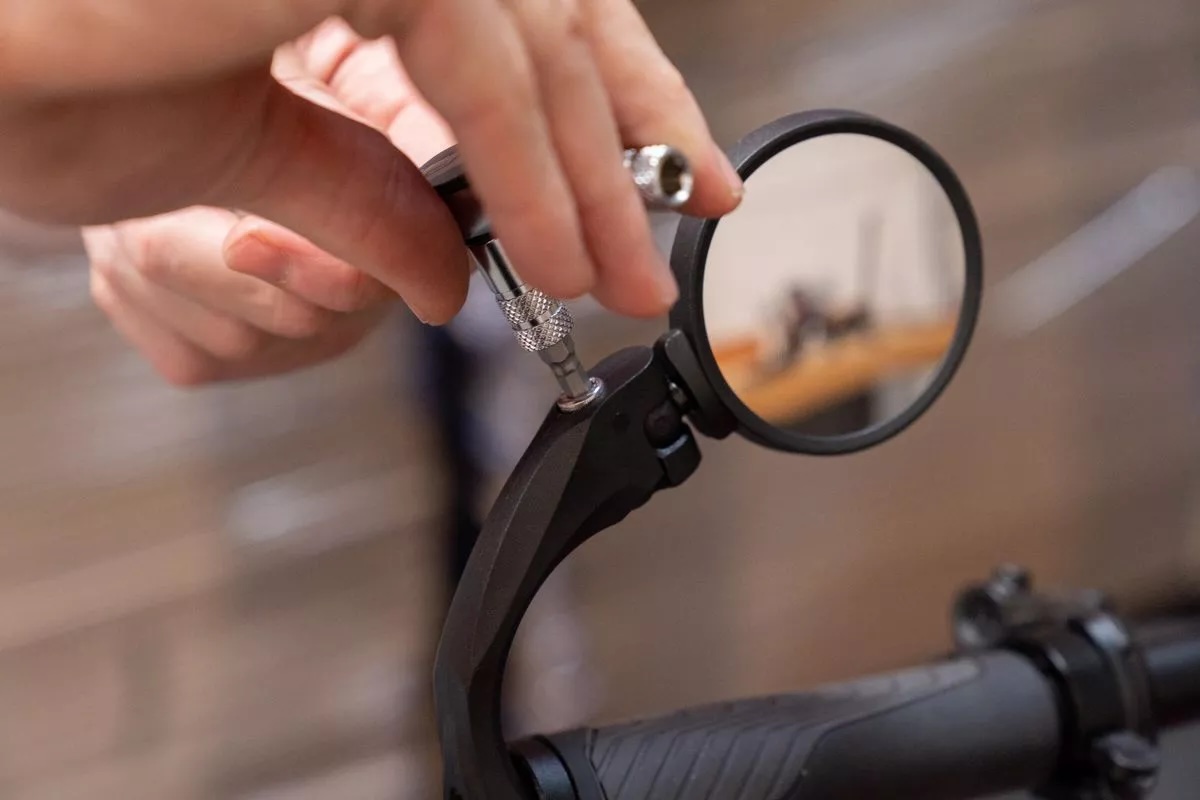
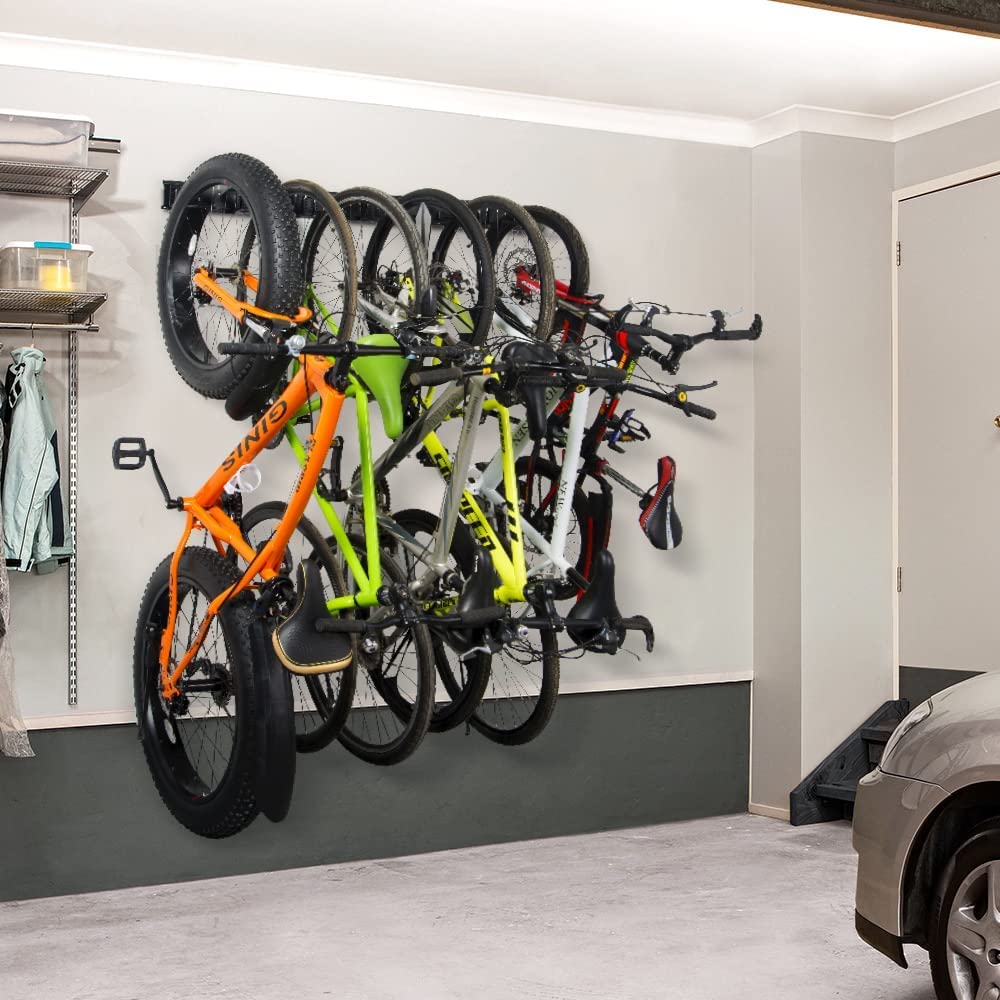

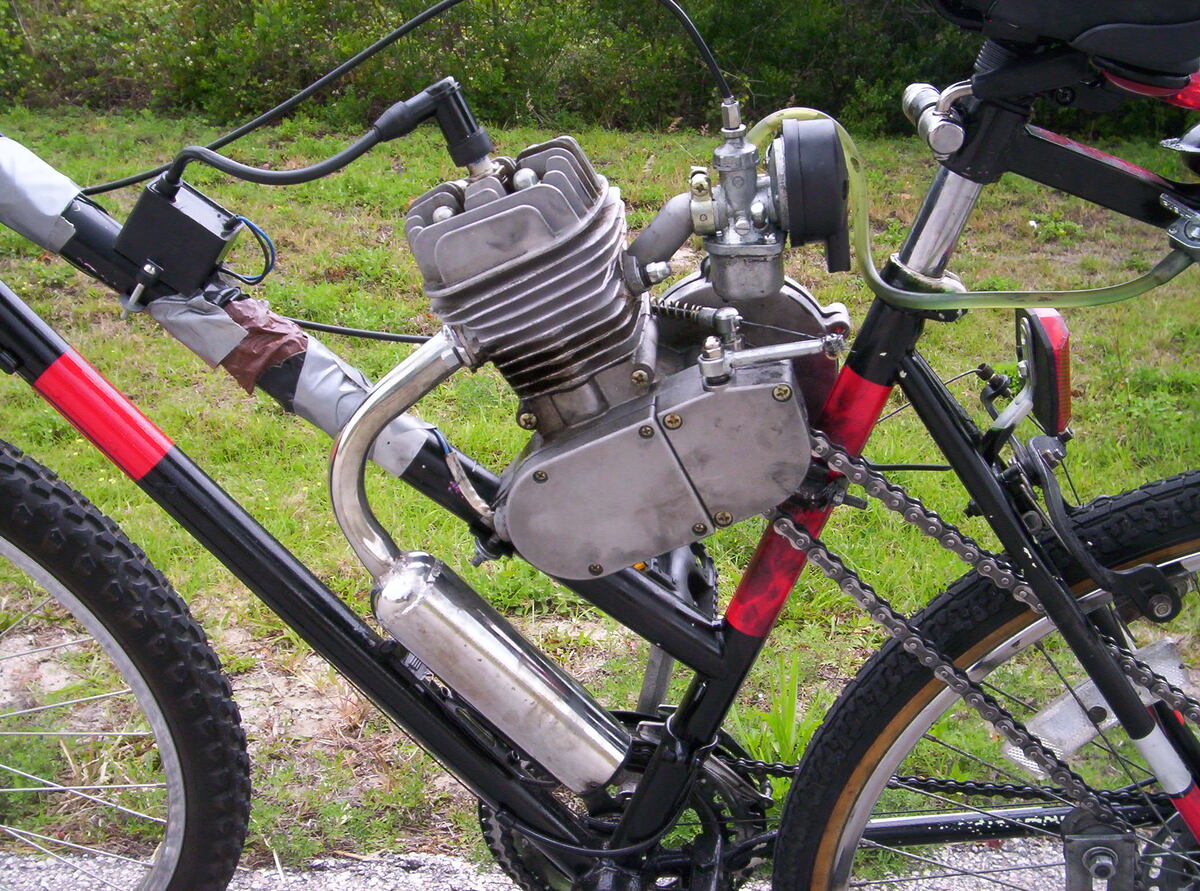

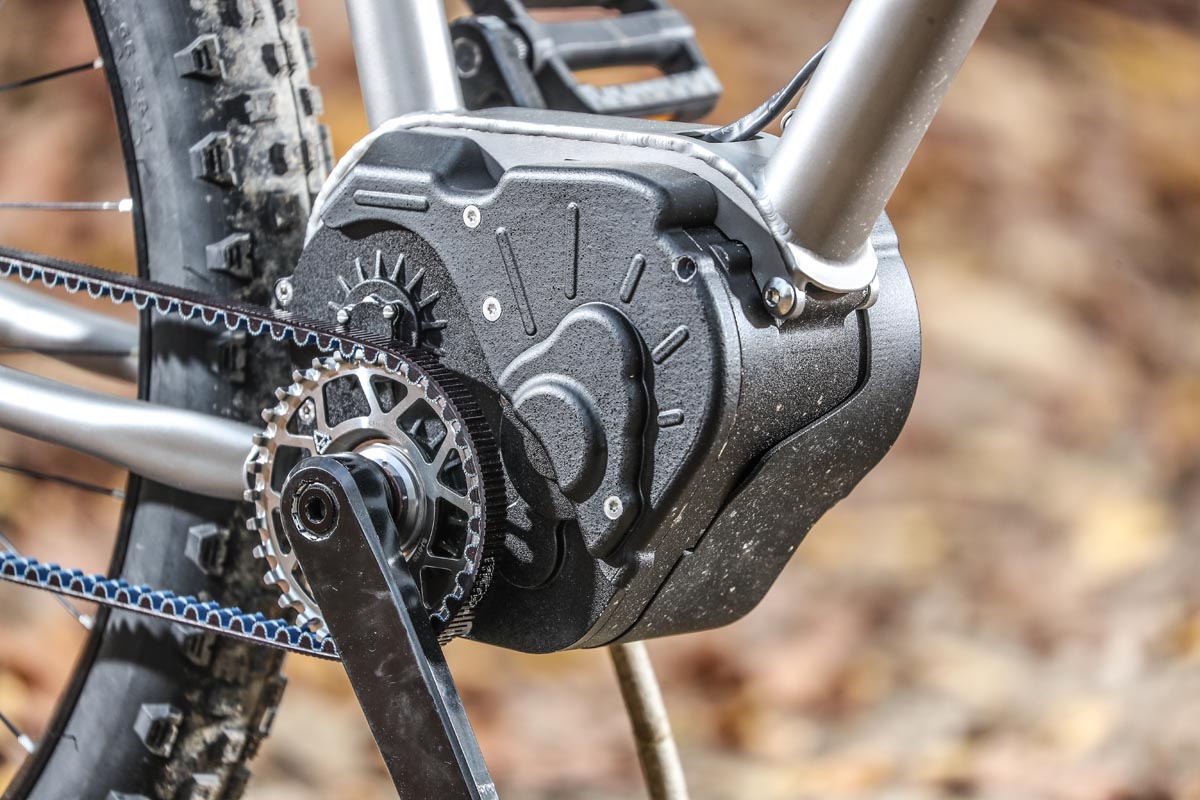

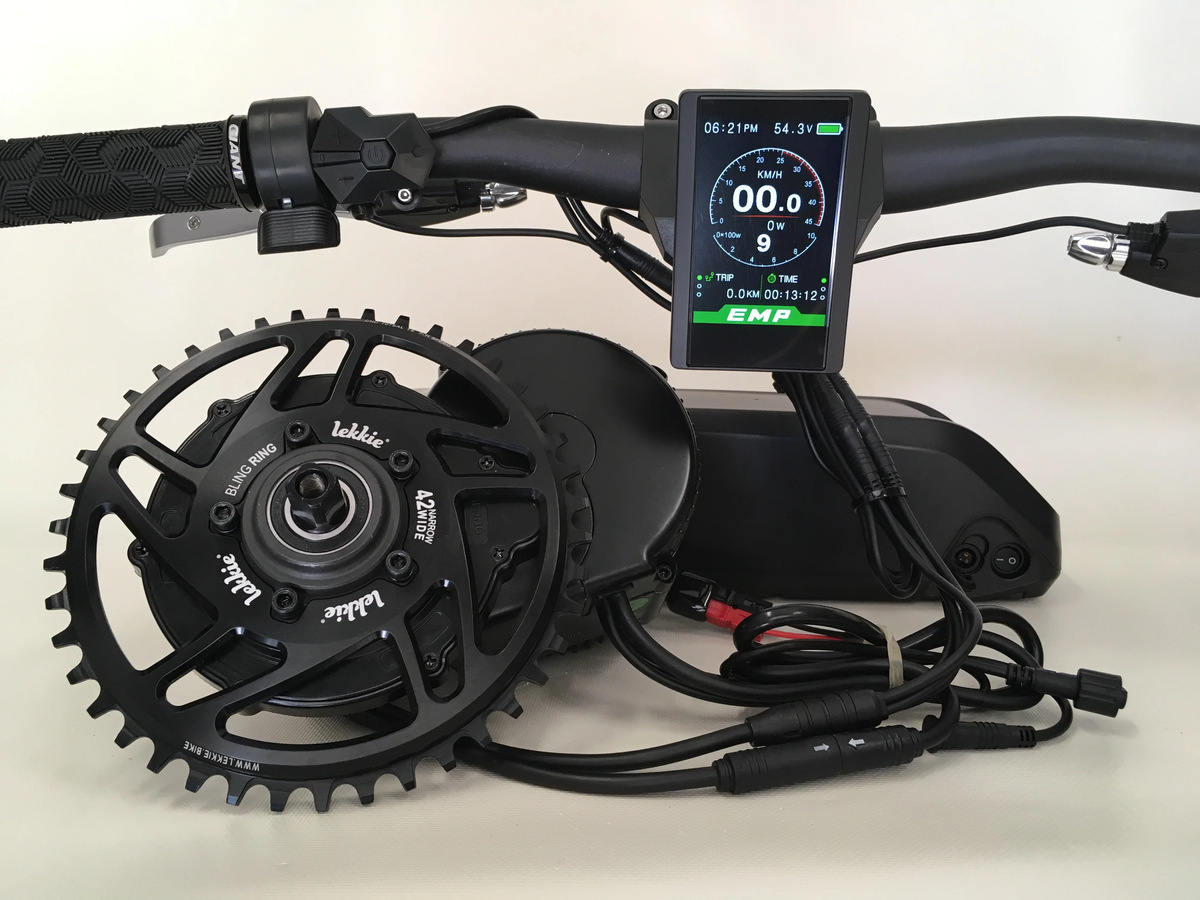
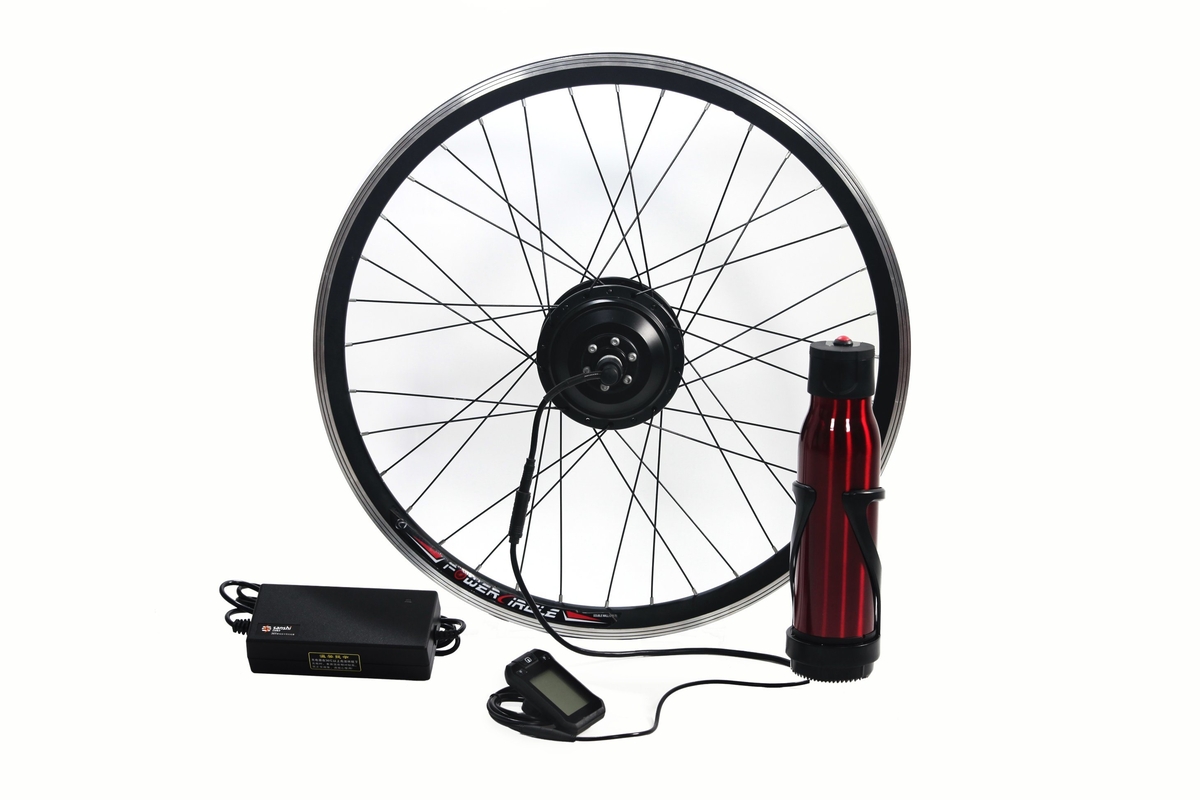

0 thoughts on “How To Store A Bicycle”